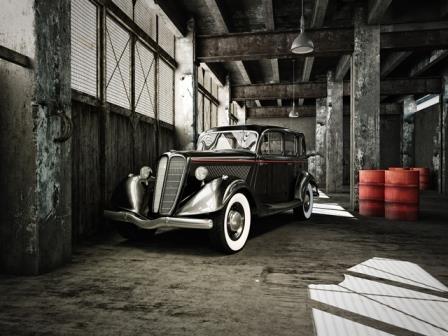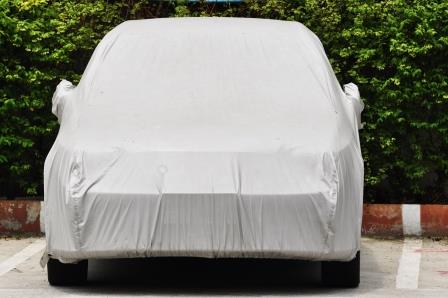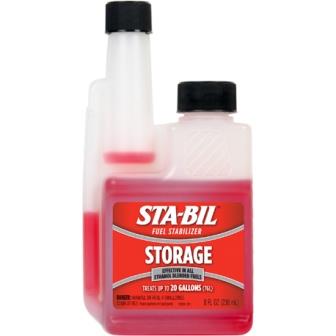Long Term Car Storage for Your Classic Car: What to Consider
 Restoring a classic car can take significant effort, time, and money. While your restored vehicle may be a method of transportation, many people see their vintage vehicles as collectors’ items as well as a hobby that offers a way to use your hands to bring something amazing back to life. Long-term classic car storage is a frequent part of owning a classic car, whether you’re waiting for new parts, preparing for a winter without a garage, or are taking a long trip away from home. Rather than putting the well-being of your car at risk, do what it takes to make sure it stays in perfect shape, no matter how long you’ll be goneOpens a new window.
Restoring a classic car can take significant effort, time, and money. While your restored vehicle may be a method of transportation, many people see their vintage vehicles as collectors’ items as well as a hobby that offers a way to use your hands to bring something amazing back to life. Long-term classic car storage is a frequent part of owning a classic car, whether you’re waiting for new parts, preparing for a winter without a garage, or are taking a long trip away from home. Rather than putting the well-being of your car at risk, do what it takes to make sure it stays in perfect shape, no matter how long you’ll be goneOpens a new window.
Choose a Classic Car Storage Facility
You wouldn’t let just anyone drive your classic car, so why would you store it in a place that you can’t trust? Some storage facilities aren’t used to storing classic cars, and may not have appropriate space to ensure your car is safe from exposure to extreme heat, humidity, or water. Before choosing a storage center, be sure to tour the facility,Opens a new window see the space your car will be kept in, and ask for references from others who have stored classic cars.
Clean Your Classic Car Thoroughly
After investing time and money in restoring your classic car, the last thing you want is permanent damage to the paint job or the upholstery. Before putting your car in storageOpens a new window, make sure there are no spills, splatters, stains, or weather spots that could cause lasting damage to the paint job or interior. Stains and spots from sleet, salt, and animal debris can wreak havoc on your car’s exterior, creating costly problems you don’t want to pay for down the road. When you store your car, a thorough cleaning and wax jobOpens a new window is a big part of making sure all of your restoration efforts won’t go to waste.
Invest in a Good Cover
 When you’re not watching your car, you never know what might happen. Rather than assuming it will be in good hands, go the extra mile to protect it yourself. A high-quality cover can make sure nothing disturbs your car, damages the paint job, or causes functional problems later on. Classic car covers are available for a wide range of makes and models, but if you can’t find the right fit, custom covers can be designed by many reliable retailers.
When you’re not watching your car, you never know what might happen. Rather than assuming it will be in good hands, go the extra mile to protect it yourself. A high-quality cover can make sure nothing disturbs your car, damages the paint job, or causes functional problems later on. Classic car covers are available for a wide range of makes and models, but if you can’t find the right fit, custom covers can be designed by many reliable retailers.
Change the Fluids
Maybe the fluid levels in your car are where they need to be, but maybe they aren’t. Rather than risking it, take time before you store your car to flush all fluids and replace them, including engine oil, anti-freeze, power steeringOpens a new window, and brake fluid. Dirty oils contaminated by acid or water can have long-lasting effects on your car’s performance, creating expensive maintenance problems that can lead to permanent engine and bearing failure.
Fill the Gas Tank
 It may seem counter-intuitive, but a full gas tank is essential when storing a car. A full gas tank reduces the amount of water that can be absorbed by the gasoline, diminishing the risk of the fuel in your car turning to varnish. Additives like STA-BIL® Storage Fuel StabilizerOpens a new window will reduce the risk of oxidation in your gas tank. STA-BIL® should be mixed with the existing gas in your tank, ensuring protection throughout.
It may seem counter-intuitive, but a full gas tank is essential when storing a car. A full gas tank reduces the amount of water that can be absorbed by the gasoline, diminishing the risk of the fuel in your car turning to varnish. Additives like STA-BIL® Storage Fuel StabilizerOpens a new window will reduce the risk of oxidation in your gas tank. STA-BIL® should be mixed with the existing gas in your tank, ensuring protection throughout.
Protect the Engine From Rust
Engine rust can be a serious issue in classic cars, especially when you’ve spent extensive time and money restoring a classic engine block that can’t be easily replaced. Rather than risking the possibility of damage while in storage, spray all exposed areas around the engine with a lubricant like STA-BIL Rust Stopper Opens a new windowto create a protective coating on elements like hose clamps, coils, and carburetor bodies.
Make Last-Minute Preparations
Before storing your car for a long period of time, take a 30-minute drive in order to evaporate any moisture on the engine and exhaust. When you park the car in the facility, use the parking brake to make sure your car won’t roll if the brakes fail, and make sure the air pressure in your tires is appropriate. Over-inflating the tires can be a benefit if you don’t plan to drive your car for several months; higher than average tire pressure can prevent flat spots.
Separation from your classic car may be hard to face, but proper preparationsOpens a new window can be the difference between keeping your vehicle in great condition and facing potential problems down the road. By taking the appropriate preparatory steps— replacing fluids, washing and waxing your car, and adding STA-BIL Storage Fuel Stabilizer to your gas tank, you can store your car with peace of mind.






Hi, thanks for sharing! You’v mention a lot of beneficial and useful tips to protect the car in long storage esp. for the classic one. Though, if this is classic cars, how often does it need to be detailed in a month? It won’t affect the performance? Thanks!
For classics, just as any car it’ll depend on how often if gets driven and the conditions that the car is in. Keeping your car clean, and the engine will help keep a classic looking and performing at its best.